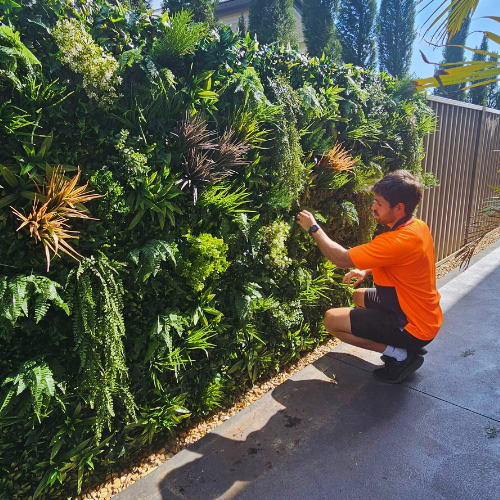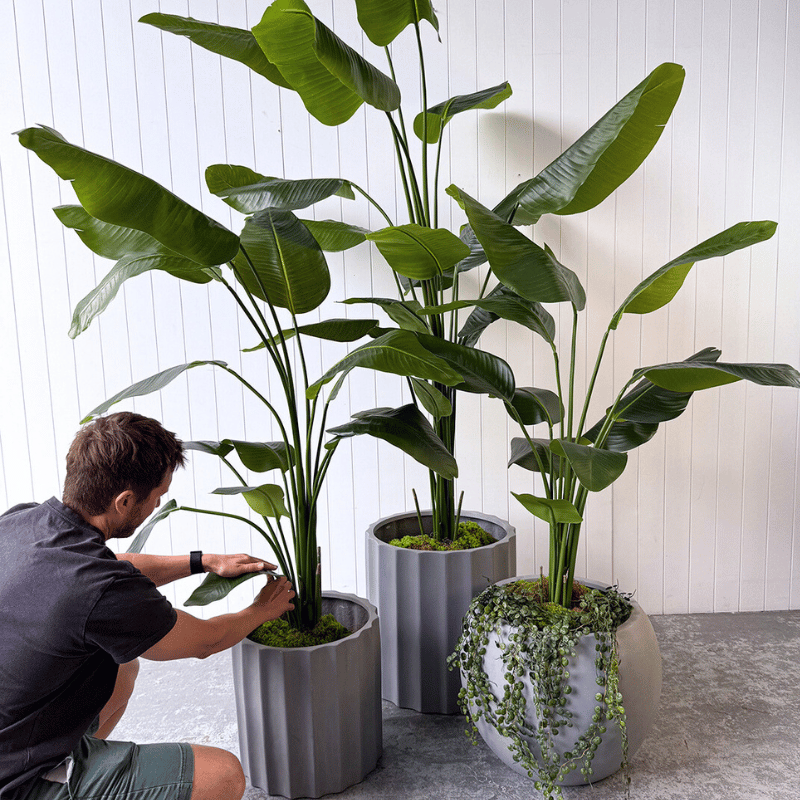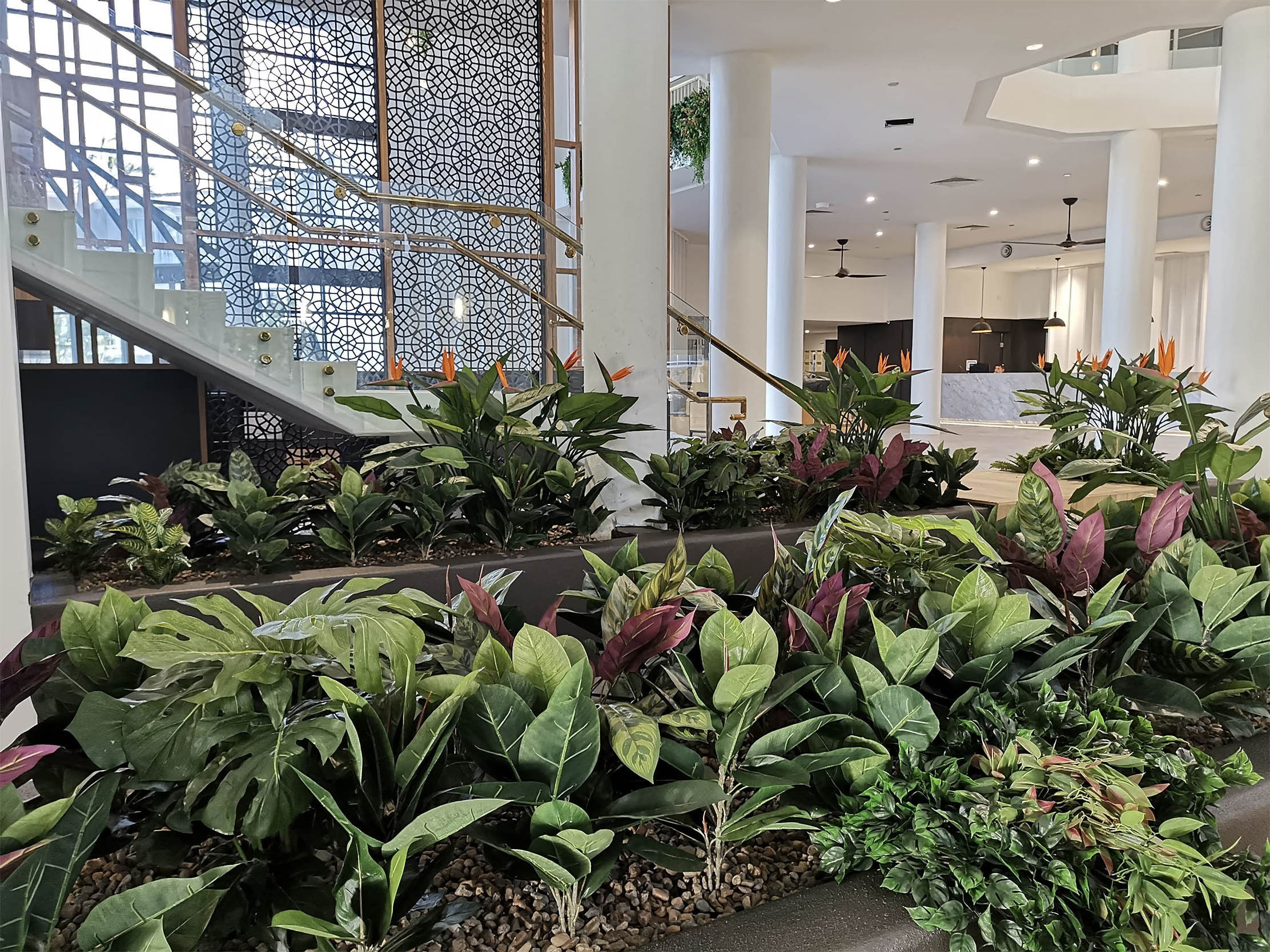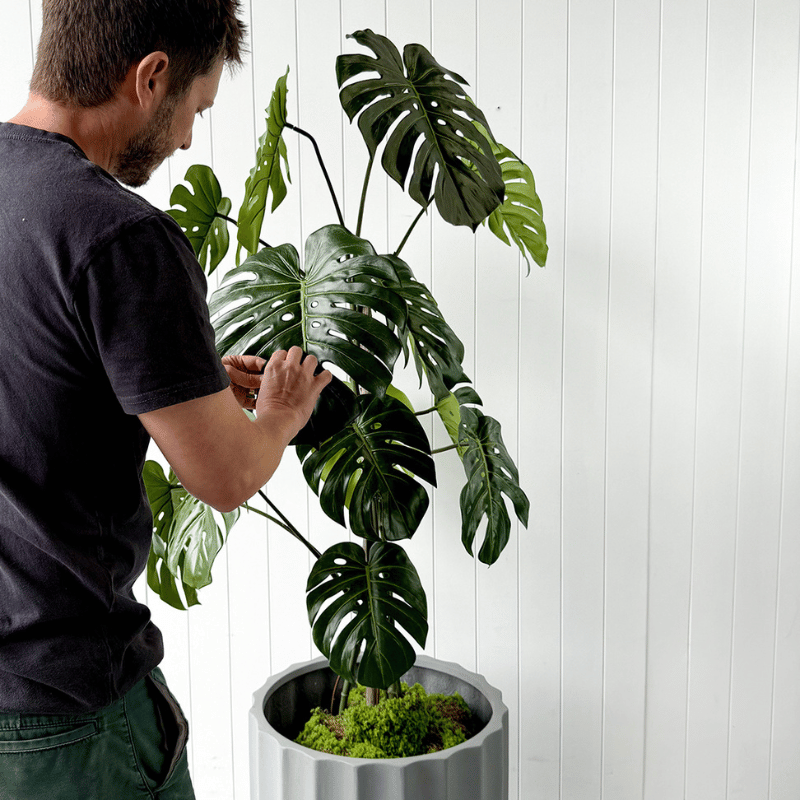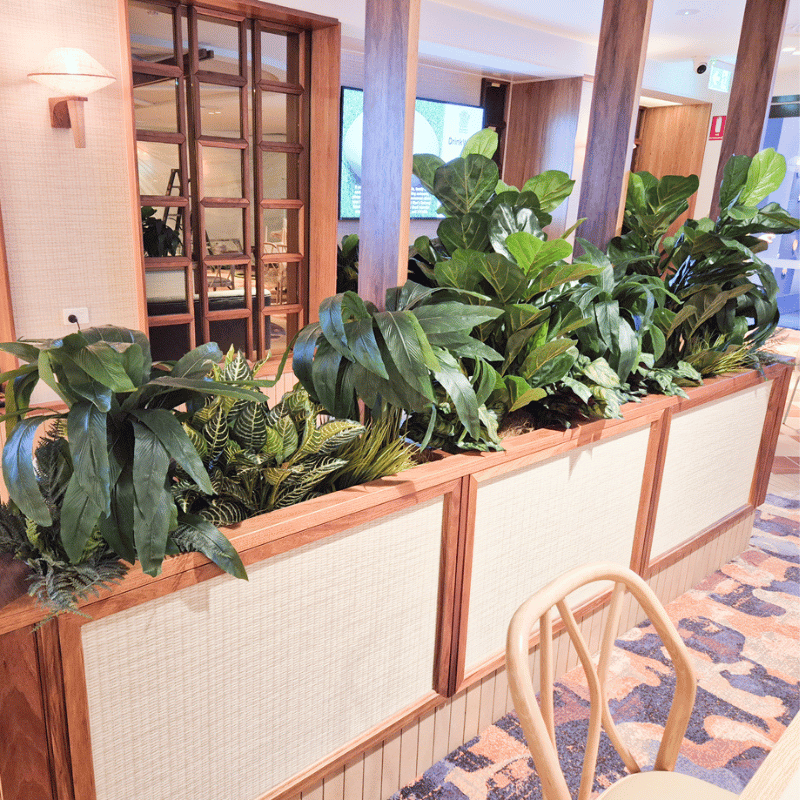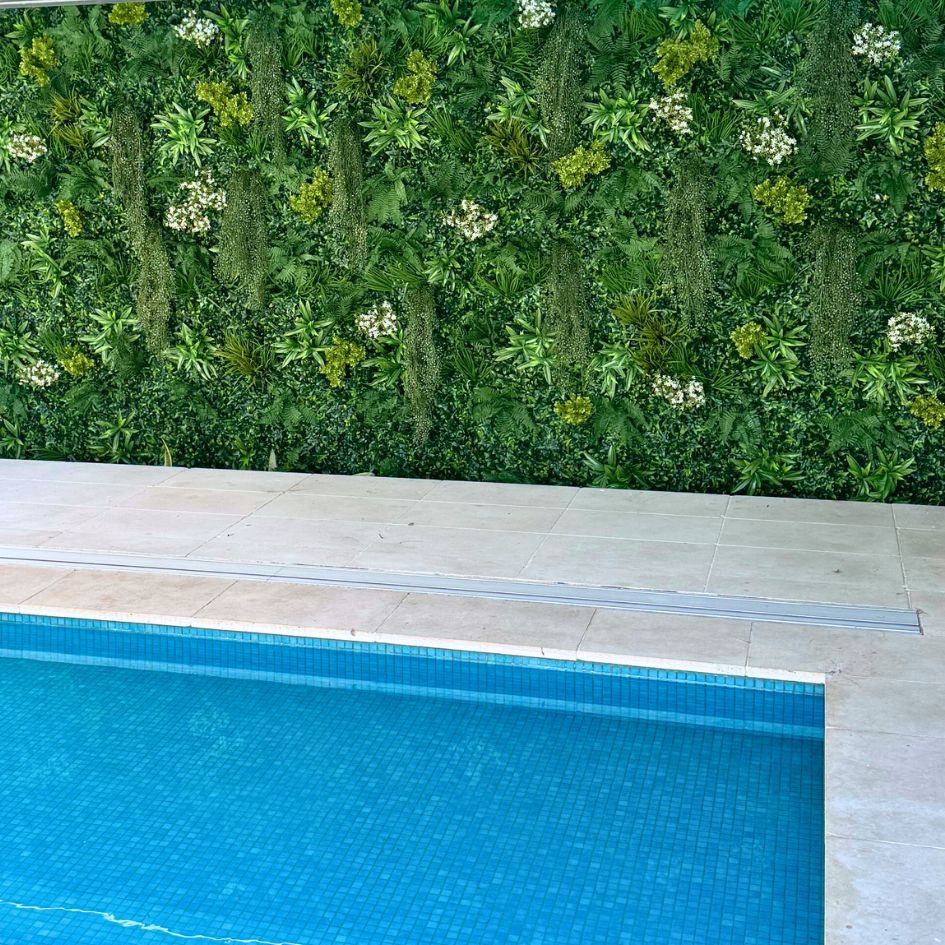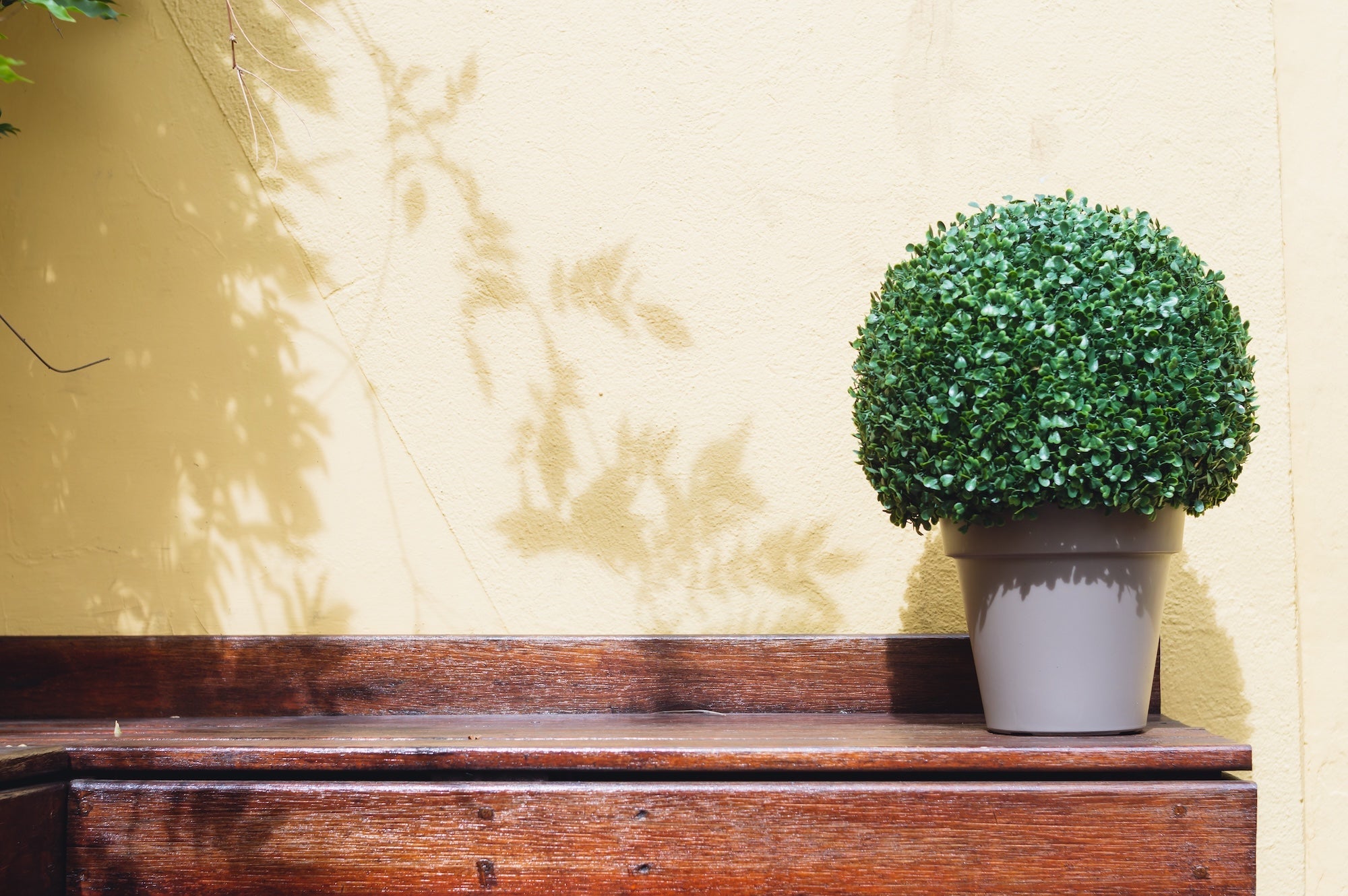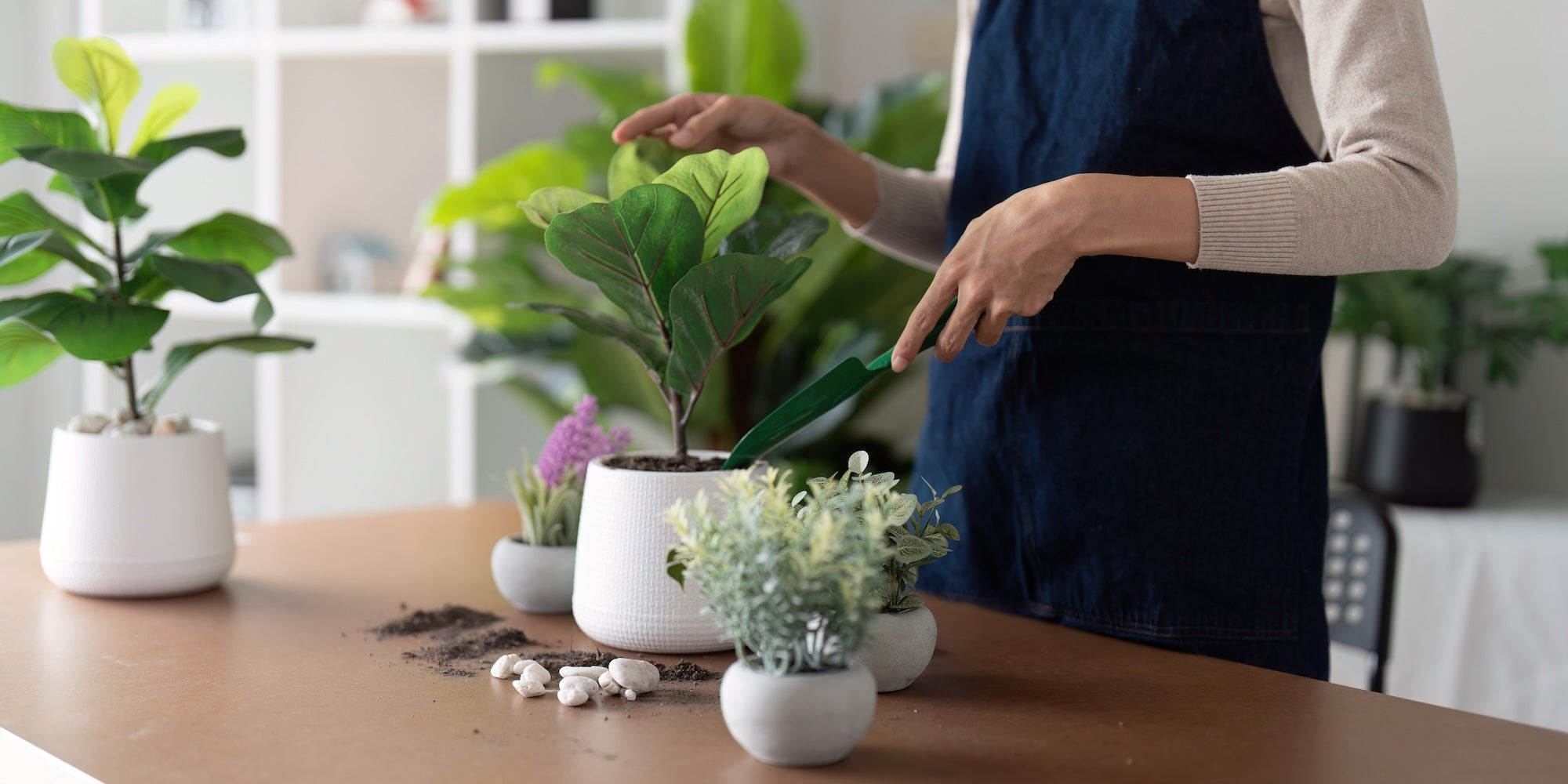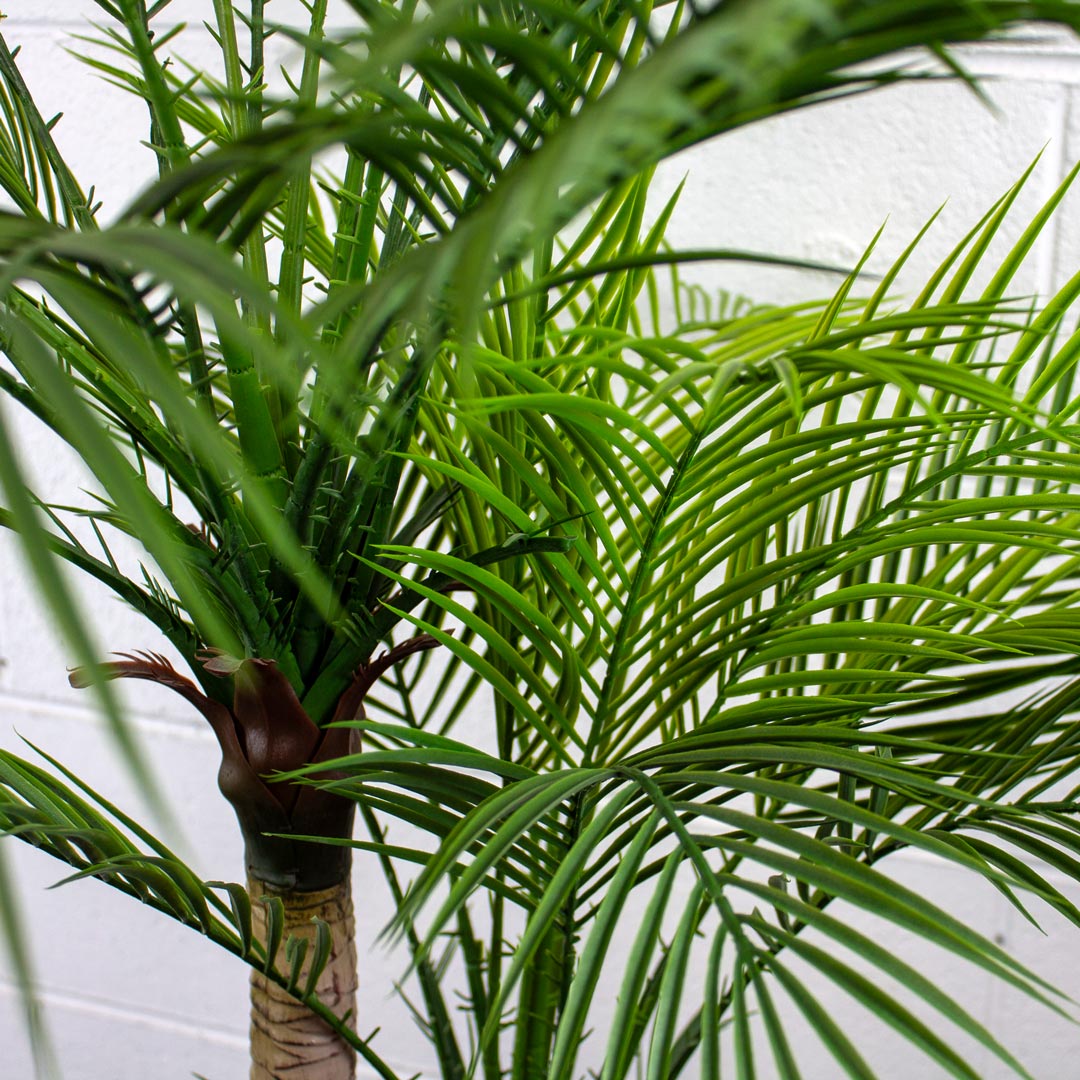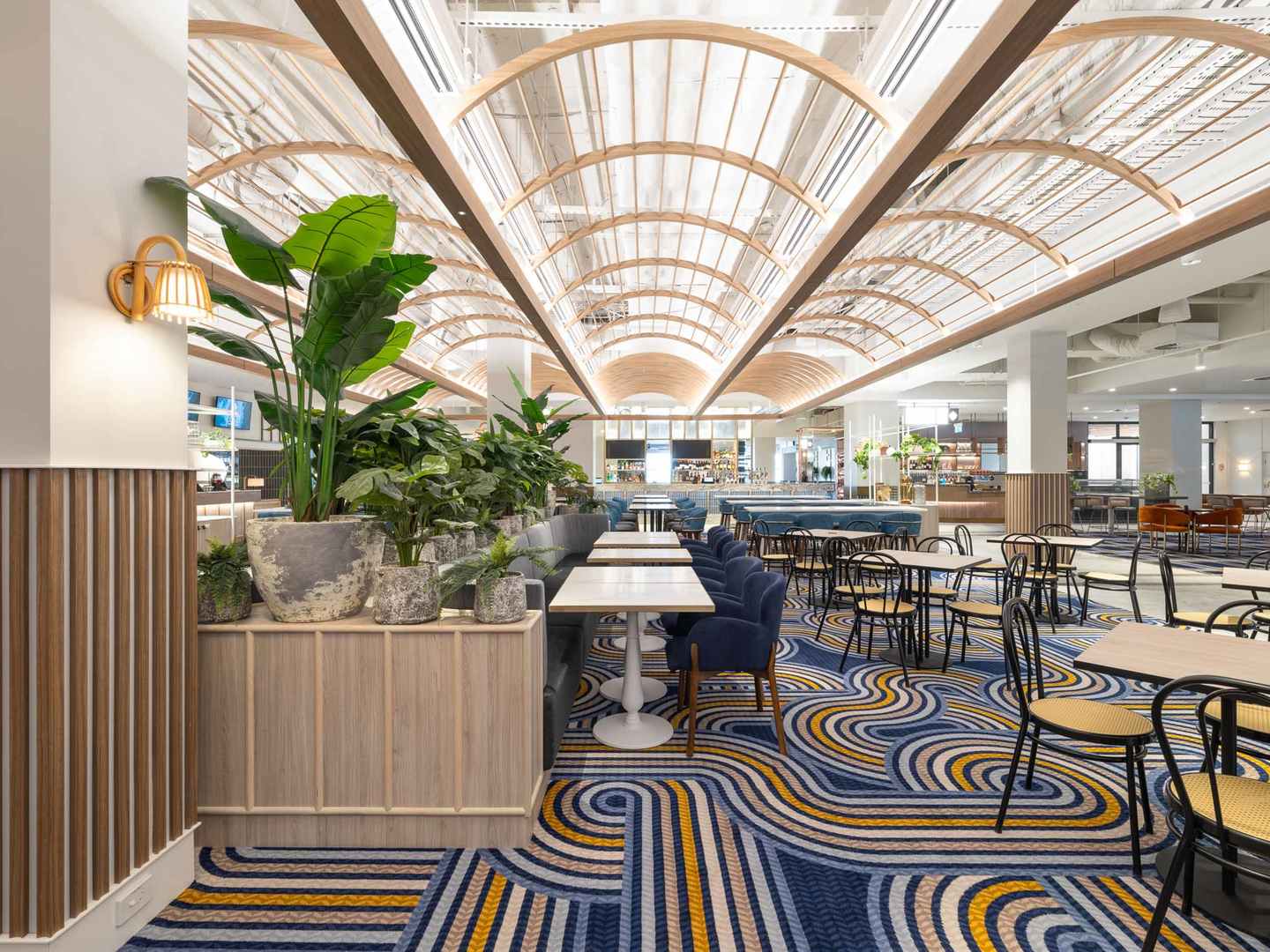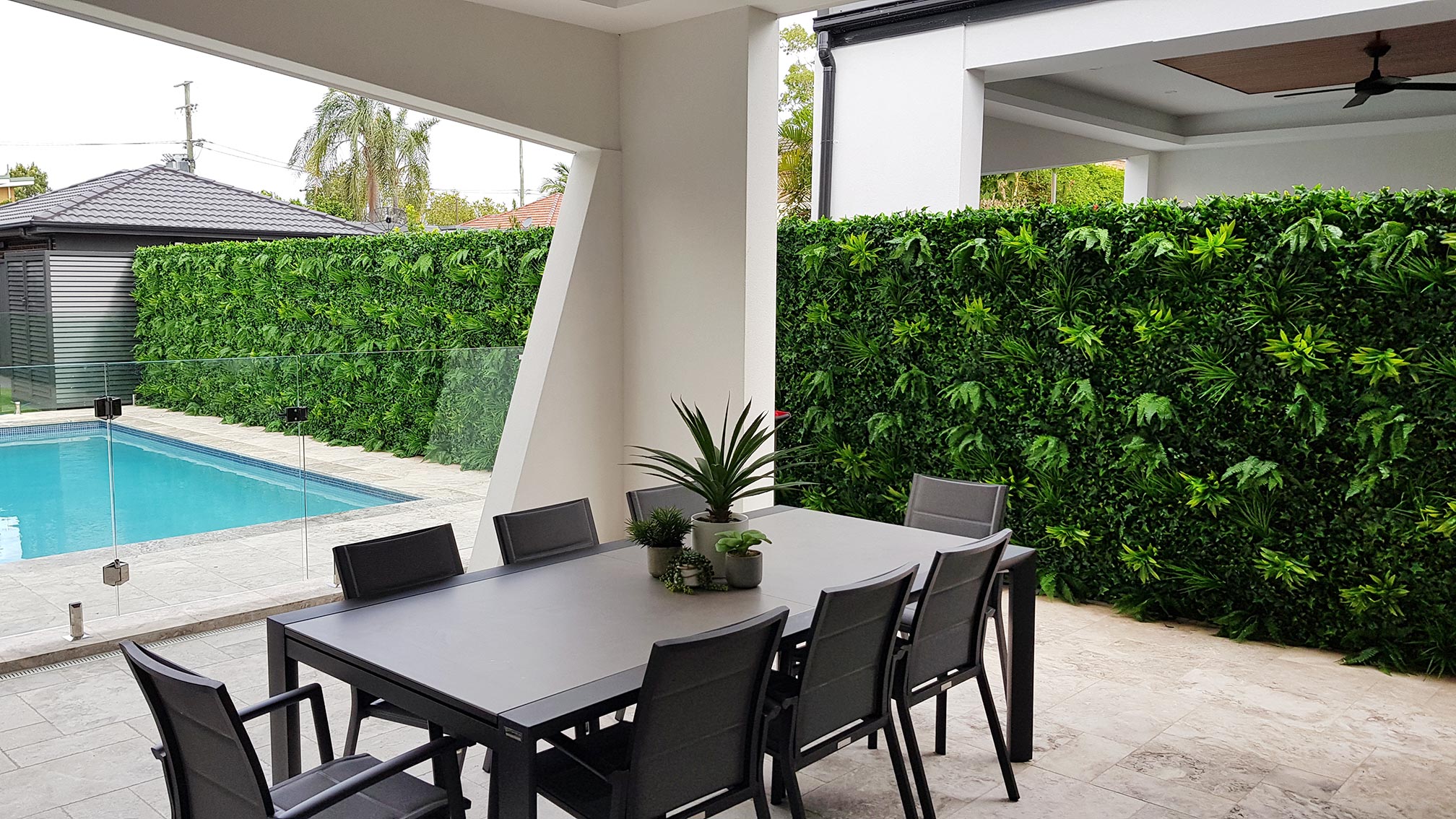Artificial plants are a fantastic way to bring greenery to your outdoor spaces without the maintenance that live plants require. However, securing artificial plants outdoors is essential to ensure they remain stable and visually appealing, especially in areas with high winds or potential safety risks. In this blog, we’ll guide you through effective methods for keeping your artificial trees and plants secure outdoors, allowing you to enjoy them for years to come.
Why Secure Outdoor Artificial Plants?
Securing artificial plants outdoors is essential for several reasons. While artificial plants like areca and kentia palm trees are durable and low-maintenance, they still require proper anchoring to prevent damage or instability.
Prevent Wind Damage: Avoid Plants Blowing Over or Away
Strong winds can easily knock over artificial plants and damage them or the surrounding area. Securing your artificial trees and plants ensures they stay in place, even during gusty conditions.
Deter Theft: Make it Harder for Plants to Be Easily Removed
If your artificial plants are placed in a public or semi-public space, securing them prevents theft or vandalism. By anchoring them properly, you make it harder for someone to casually remove them.
Maintain Aesthetic Appeal: Keep Plants Upright and Looking Natural
An artificial plant that is consistently knocked over or leaning can appear unnatural and detract from the aesthetic of your space. Securing plants like grass yucca trees ensures they remain upright, maintaining their visual appeal.
Ensure Safety: Prevent Plants from Becoming a Hazard
An unsecured artificial tree or plant can become a tripping hazard or cause accidents, especially in high-traffic areas. Keeping your plants secure helps ensure the safety of everyone in the area.
Assessing Your Outdoor Environment
The first step in securing your artificial plants outdoors is assessing the environment where they’ll be placed. Here are key factors to consider:
Identifying Windy Areas
Wind exposure is one of the biggest factors in plant instability. Before potting or placing your plants, identify areas prone to high winds. Corners, balconies, and areas near the coast are often more susceptible.
Direction and Strength of Prevailing Winds
Understanding the direction and strength of the prevailing winds in your area helps you position your plants more effectively. Planting your artificial trees where the wind hits least can reduce their exposure to damage.
Tall vs. Short Plants
Taller artificial plants are more likely to be affected by wind, while shorter plants are typically more stable. When securing tall artificial trees, additional anchoring may be required.
Bushy vs. Sparse Foliage (Wind Resistance)
Bushy plants, like large artificial palms, can create more wind resistance compared to sparse foliage plants. Consider the plant’s fullness when evaluating its wind resistance.
Decking, Patio, Lawn, Balcony Railings
The surface where you place your plants matters. Decking, patios, and balconies may need additional support, such as heavy pots or anchoring devices, to secure artificial plants outdoors.
Choosing the Right Pot or Planter
The pot or planter you choose plays a significant role in securing your artificial plants outdoors.
Heavy Materials (Ceramic, Concrete, Metal)
Heavy materials like ceramic, concrete, or metal pots provide the weight needed to anchor your artificial plants in place. These materials are less likely to tip over in windy conditions.
Wide Bases for Stability
A pot with a wide base is essential for stability, especially for artificial trees. A wide base ensures the weight is distributed evenly, preventing the plant from becoming top-heavy.
Selecting a Pot Proportionate to the Plant's Height and Spread
Make sure the pot is proportionate to the size of the plant. A large, bushy artificial tree will require a larger, heavier pot to stay secure. Conversely, smaller plants need smaller pots that still provide enough weight to support them.
Methods for Securing the Plant in the Pot
Now that you have your pot, here are the most effective methods for securing the artificial plant within it:
Using Rocks, Gravel, Sand, or Concrete
Fill the bottom of your pot with rocks, gravel, sand, or even concrete. These materials add weight and prevent the plant from shifting in the pot. Concrete is ideal for large plants, while sand and gravel work well for smaller ones.
Water-Filled Weights (For Temporary Solutions)
If you’re looking for a temporary solution, water-filled weights can be used. These are particularly useful in lightweight pots, providing additional weight and stability during seasonal changes.
Anchoring the Plant's Stem
For taller artificial trees and plants, anchoring the stem inside the pot is essential for added security.
Using Expanding Foam for a Firm Base
Expanding foam can be used to fill the bottom of the pot, around the plant’s base, creating a firm and supportive hold. This method is ideal for artificial trees as it helps them stay upright.
Pouring Concrete Around the Base
For maximum stability, pour concrete around the base of the artificial tree inside the pot. Concrete provides a solid foundation and keeps the plant firmly in place.
Rebar or Stakes Driven Through the Original Base
If you have an especially large plant, you can drive rebar or stakes through the base of the plant and into the pot. This ensures the plant is securely anchored and prevents it from toppling.
Securing the Original Pot Inside the New Pot
For larger artificial plants, you may need to secure the original pot inside a larger decorative pot.
Using Bricks, Blocks, or Foam to Wedge the Original Pot
Place the original pot inside the larger one, then use bricks, blocks, or foam to wedge the original pot in place. This prevents the plant from shifting inside the pot.
Using Pot Anchors or Brackets
Pot anchors or brackets can be used to secure the plant’s original pot to the new pot, preventing it from moving.
Drilling and Bolting (For Permanent Solutions)
For a more permanent solution, you can drill and bolt the original pot inside the new pot. This method is highly effective for large artificial trees that require significant stability.
Securing on Balconies/Railings
Balconies and railings require specific solutions to secure artificial plants:
Zip Ties or Bungee Cords for Railings
You can use zip ties or bungee cords to secure artificial plants to railings. This method is effective for smaller plants and those placed on balcony railings.
Heavy, Wide Planters
For added security, use heavy, wide planters on balconies to prevent the plant from being easily blown over.
Burying or Partially Burying Pots
If you’re planting in a garden bed, burying or partially burying the pot can provide extra stability.
For Large Plants in Garden Beds
For larger artificial trees, partially burying the pot in the ground can prevent it from tipping. This method also helps integrate the plant naturally into the garden design.
Using Plant Stands with Bases
For a stylish solution, consider using plant stands with wide, heavy bases to secure your artificial plants outdoors.
Selecting Heavy, Stable Stands
Ensure the plant stand is heavy enough to hold the weight of the plant without tipping over. Look for stands with a solid, stable base for added security.
Maintenance and Longevity Tips
Proper maintenance helps ensure your artificial plants outdoors stay secure and maintain their visual appeal.
Inspecting Security Measures After Strong Winds
After strong winds or storms, inspect your artificial plants to ensure they’re still secure in their pots. Reassess the weight and stability if necessary.
Maintaining the Plant’s Appearance
Regularly dust and clean your artificial plants to maintain their natural appearance. This will ensure they remain looking fresh and vibrant year-round.
Winter Storage (Optional)
If your artificial plants outdoors are exposed to harsh winter weather, consider bringing them inside or protecting them with covers.
Protecting from Extreme Weather
Extreme temperatures and snow can damage artificial plants over time. Consider storing them indoors or in a sheltered area during the winter months.
Troubleshooting Common Issues
Sometimes, even after securing your artificial plants, issues can arise. Here’s how to troubleshoot:
Plant Still Wobbly: Re-Evaluate Weight and Anchoring
If your plant is still wobbly, ensure that the weight and anchoring materials are sufficient. Add more gravel or foam to the pot if necessary.
Pot Sliding on Surface: Adding Non-Slip Pads
If your pot slides on hard surfaces, consider adding non-slip pads to the bottom of the pot to prevent movement.
Visible Securing Mechanisms: How to Conceal Them with Top Dressing
If your securing mechanisms are visible, use top dressing like moss, bark, or gravel to cover them and create a more natural look.
Conclusion
Securing artificial plants outdoors ensures their longevity, stability, and aesthetic appeal. By choosing the right pot, using effective anchoring methods, and regularly maintaining your plants, you can enjoy their beauty year-round. Whether it’s a small decorative plant or a large artificial tree, these tips will help keep your outdoor plants secure and looking natural.
Transform Your Outdoor Space with Evergreen Walls
Ready to enhance your outdoor space with beautiful, low-maintenance artificial plants? Visit our collection today and find the perfect artificial plants and artificial trees to suit your design needs!

